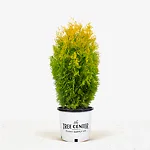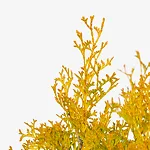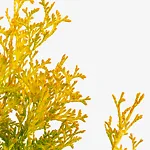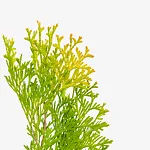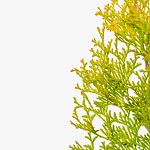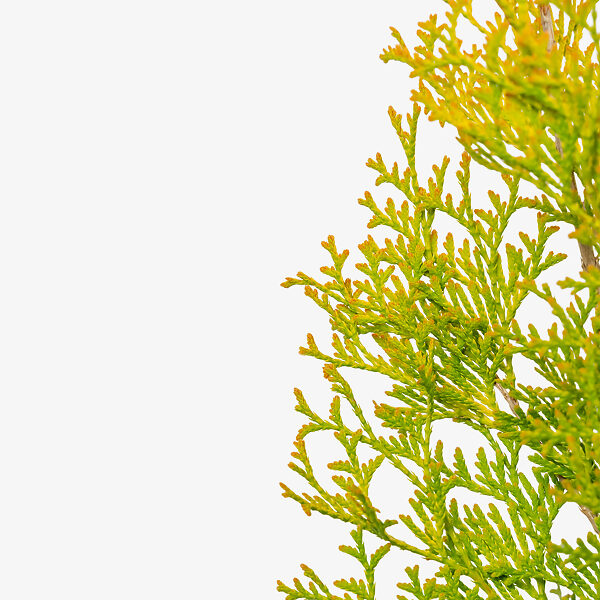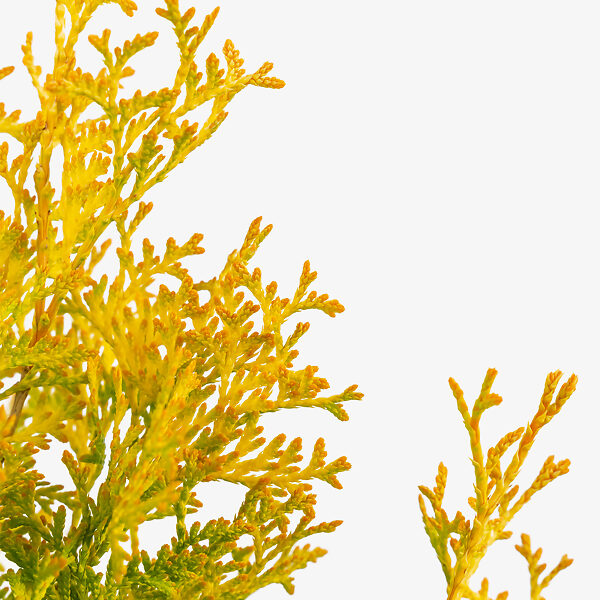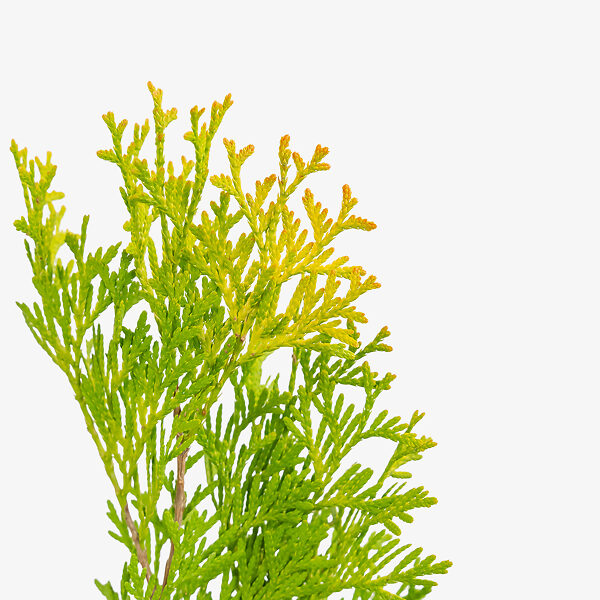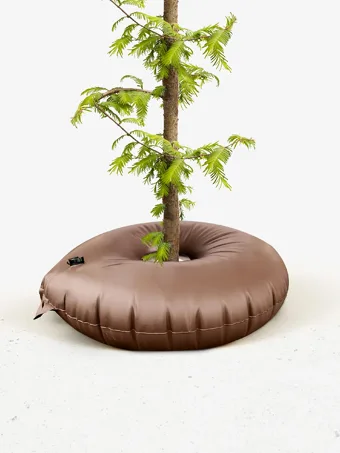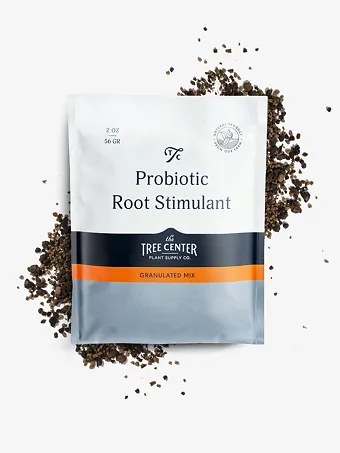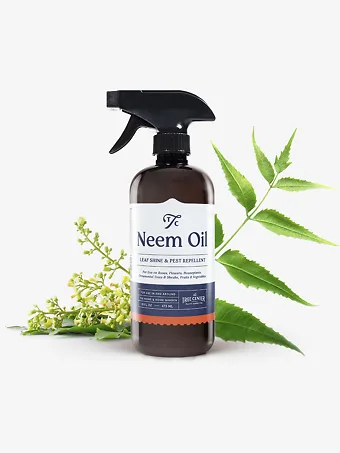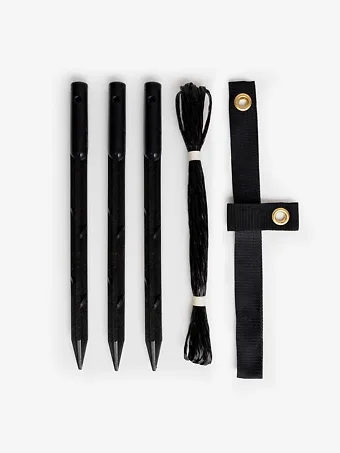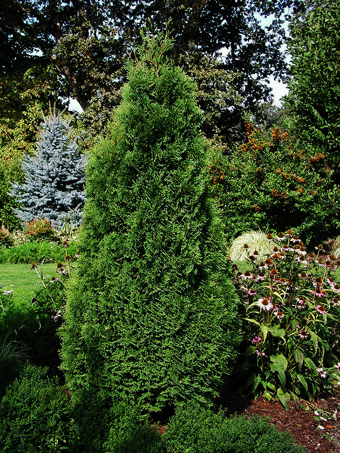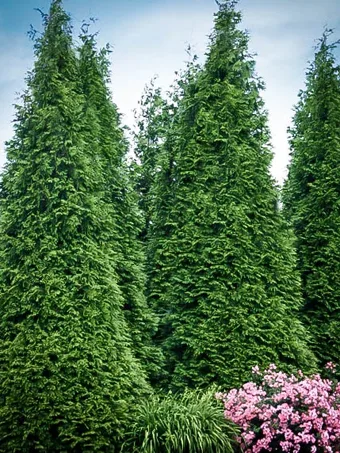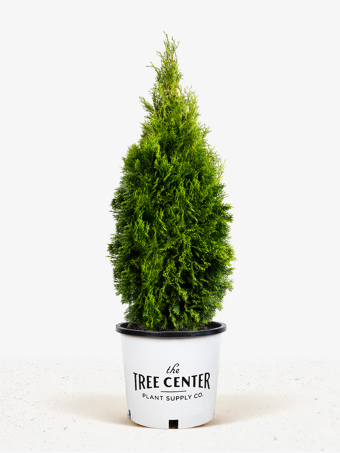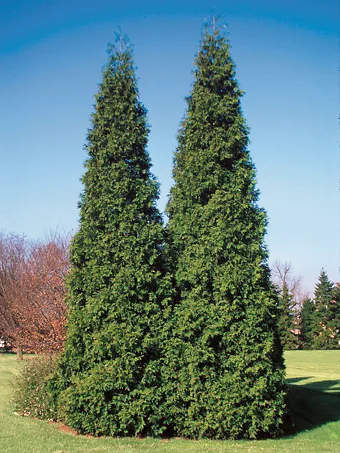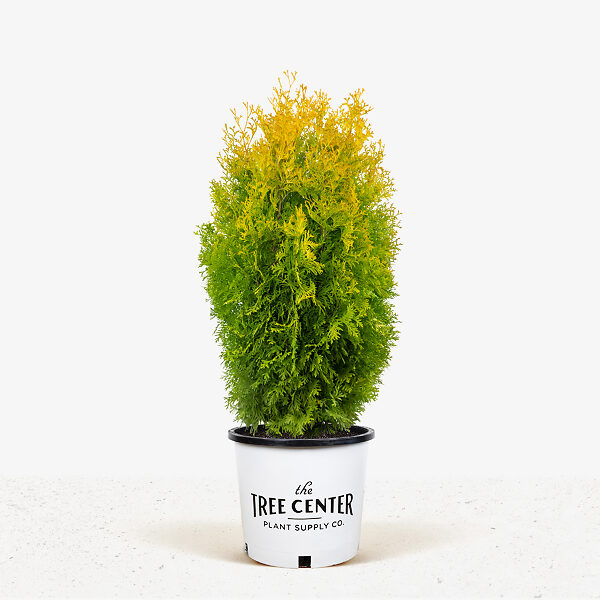
Amber Gold Arborvitae
Thuja occidentalis ‘Jantar’ (PP# 22,296)View more from Arborvitae Trees
Amber Gold Arborvitae
Thuja occidentalis ‘Jantar’ (PP# 22,296)
Select Size
30 day - ARRIVE AND THRIVE™ guaranteeLearn more


Special Features

Botanical Name
Thuja occidentalis ‘Jantar’ (PP# 22,296)
Outdoor Growing zone
4-8
Mature Height
10-20
Mature Width
2-4
Sun needs
Full Sun, Partial Sun
DOES NOT SHIP TO
AK, CA, HI, PR
The Amber Gold Arborvitae is a beautiful upright cold-hardy evergreen with brilliant golden foliage and dense growth, even when young. The bright yellow new branches slowly darken over summer, and pass through winter a beautiful amber orange. It doesn’t burn in winter or summer, as so many golden conifers do, and its dense growth means clipping isn’t even needed. Reaching 15 feet in about 10 years, and only 3 feet wide, it will continue to grow steadily taller, but never become a monster. Grow it as a striking specimen among shrubs or other evergreens, or plant it in a pot for your terrace or patio. It is perfect beside the door, alone or in groups on the lawn, or as a brilliant hedge.
- Bright golden spring foliage
- Amber-orange winter colors
- moderate growth rates
- Doesn’t burn in winter or summer
- Grows well in cold zones
Full sun is perfect for the Amber Gold Arborvitae, and it won’t scorch. It will also grow with a little partial shade, but too much will turn it greener. It grows even in zone 4, and in any soil, even damp places. Once established it is moderately drought tolerant, and it grows in both acid and alkaline soils. Pests or diseases are very rare, but deer will eat it in winter if they can. You don’t need to trim for neatness or to control its size, but if you do, between late spring and early fall is best.
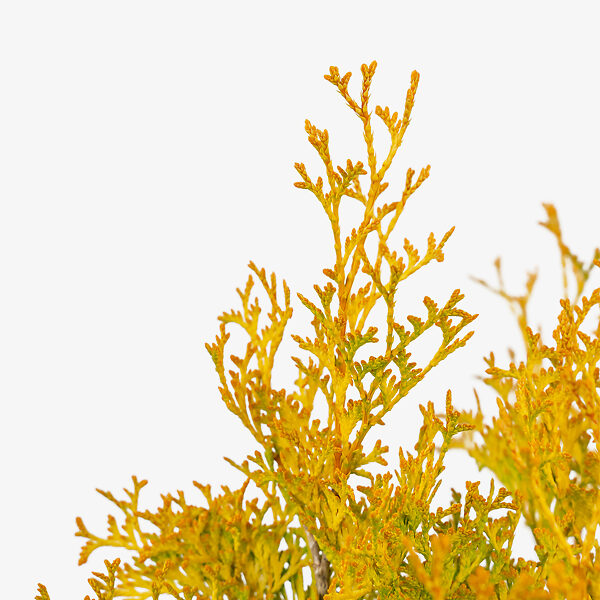
We all love a splash of gold in the garden, and in warmer zones there is a good choice of evergreens you could grow. The selection reduces dramatically when we travel north, and in zone 4 there are very few reliable golden evergreens that don’t burn badly in winter. Others burn in summer sunshine, so finding the perfect one for you can be hard. Or at least, it was, but not anymore. The vibrant Amber Gold Arborvitae has it all – magnificent vibrant spring and summer foliage; dense growth with no stems or trunk showing at all; steady growth, but a bush that won’t turn into the monster that ate your garden; and great winter-cold resistance too. Developed from the popular and reliable Emerald Green Arborvitae, this is the golden evergreen that ticks all the boxes.
Growing the Amber Gold Arborvitae
Size and Appearance
The Amber Gold Arborvitae is a slender, upright evergreen with very dense branches arranged in vertical fans. It grows 9 to 12 inches a year, becoming 10 to 15 feet tall within 10 years, and staying about 3 feet wide. As it continues to grow it could reach 20 feet, and add a foot or two in width, if not trimmed. The tiny leaves are flat scales that cling to the smaller branches, covering them entirely. Those small branches are arranged in dense, spreading fans, which are held mostly vertically. This keeps the growth dense and compact, and also completely hides the interior branches of the plant, right to ground level. It develops a slender conical form, wider at the base. The leaves in spring are bright golden yellow, making a bold garden statement. Over summer and into fall the color slowly darkens, becoming more dusky orange through the winter – a true amber gold. New growth in spring brings back the vibrant yellow tones.
Using the Amber Gold Arborvitae in Your Garden
Golden evergreens make wonderful accent specimens in the garden, in shrub beds, as part of your foundation planting, mixed with other colorful conifers, or in a planter. Use this beautiful bush alone or in clusters of 3 or 5, or make a colorful hedge by spacing them 3 feet apart. Plant a pair either side of your door, or to frame a gate.
Hardiness
This is certainly one of the most cold-resistant golden evergreens, growing easily in zone 4, and all the way into zone 8. In cold zones, soak the root-zone deeply before the ground freezes for winter, and mulch around it, avoiding the foliage.
Sun Exposure and Soil Conditions
Full sun is best for the Amber Gold Arborvitae, but it will take a little shade if necessary. Too much shade will turn it greener, and make the growth more open and loose. It grows well in all soils, both acid and alkaline, preferring richer, moist soils, so add plenty of organic material when planting, and use it as mulch too. Once established it is moderately drought tolerant.
Maintenance and Pruning
Pests and diseases are rare in this plant, but deer will eat it if they can. It grows so densely it doesn’t need trimming to look good, but if you want you can trim between late spring and early fall.
History and Origin of the Amber Gold Arborvitae
The tree that botanists call Thuja occidentalis is known as white cedar or American arborvitae. That name comes from the Latin arbor vitae, meaning ‘Tree of Life’. It got this unusual name because Native Americans showed early French explorers in Canada how to make a tea from it we now know is full of Vitamin C, saving the explorers from fatal attacks of scurvy. It was taken back to France as a miracle plant, and grown in the King’s gardens. This tree grows wild through eastern Canada and the northeastern states, and it is widely used in cold zones for hedges and specimens. Back in 1950 at a nursery in Denmark called D.T. Poulsen, an unusual seedling was spotted, that stayed green all winter. It was named ‘Smaragd’, and, when it arrived in America, given the name Emerald Green, which is what Smaragd means. This is by far the best hedging and specimen evergreen for colder zones, with moderate growth.
In 2000 Jacub Jablonski was working in his nursery in Lysomice, Poland, growing some plants of ‘Smaragd’. He spotted one branch that had bright yellow foliage – a ‘branch sport’ as these novel growths are called. He took pieces and grew new plants, which besides their color also had unusually-dense growth. These plants were grown for several years to evaluate their worth, and then Jacub and the Dutch group Breederplants Inc., of Reeuwijk, patented it with the name ‘Jantar’. That means ‘Amber’ in Polish, so when the conifer specialists Iseli Nursery, in Boring, Oregon, introduced it in America it was given the name Amber Gold Arborvitae.
Buying the Amber Gold Arborvitae at the Tree Center
We love this great new plant, which fills an important need for lovers of golden evergreens who live in colder zones – it’s perfect for them. Even in warmer places the unique winter coloring makes this plant a winner, so order now, because it won’t be available for long.
